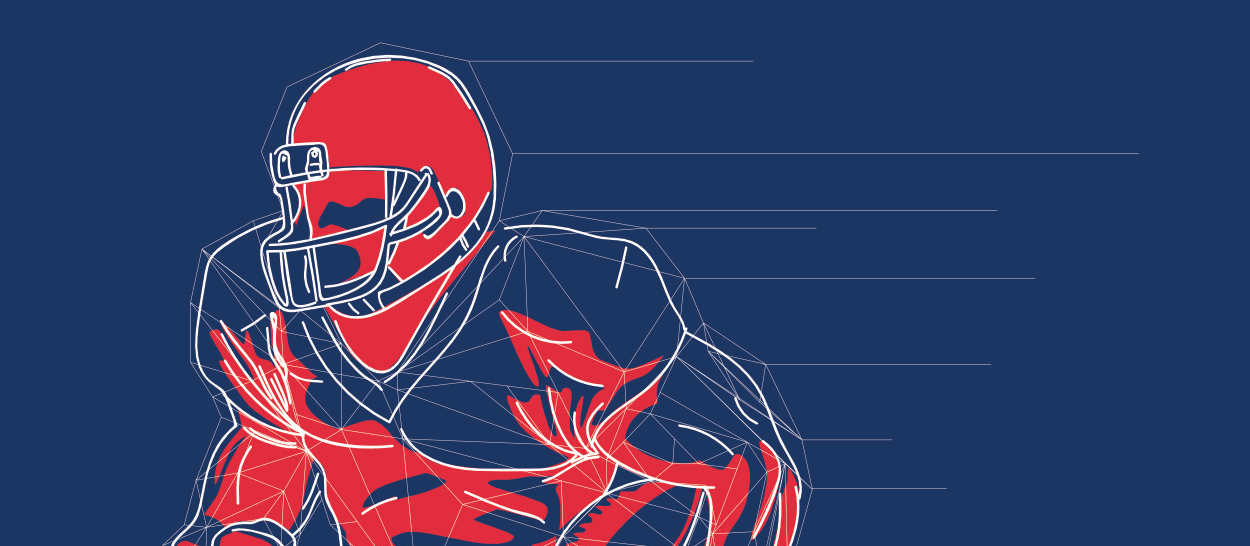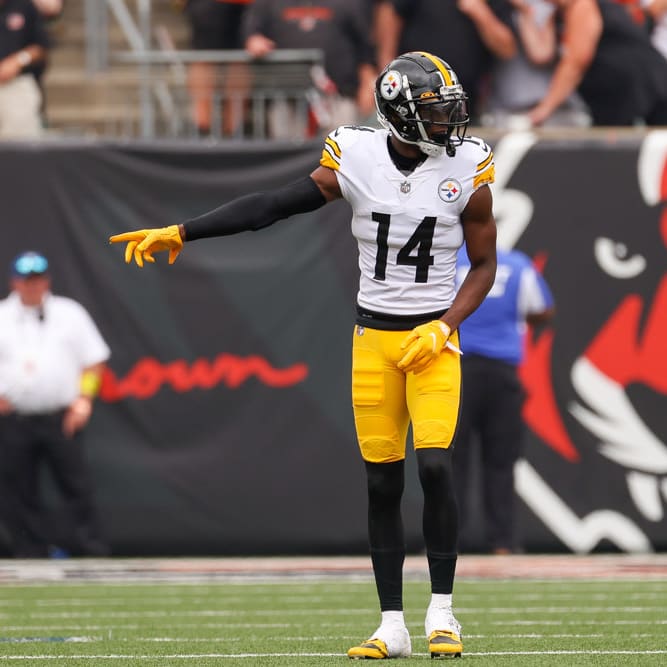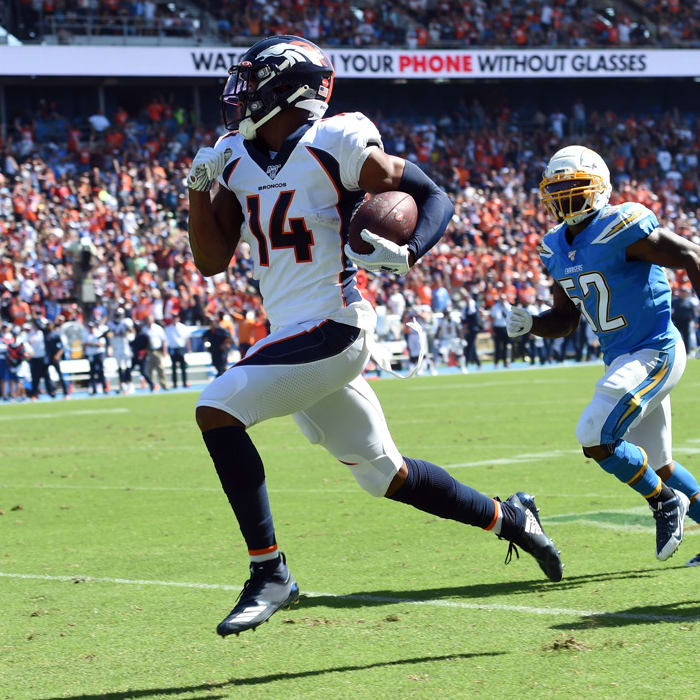This article is part of our Fantasy Football Draft Strategy series.
If your league is a draft, and not an auction, one initial strategy question is what is the best draft slot? The other question is once you have a draft slot, what is a pick in each round worth?That becomes a complex questions in leagues that don't use the traditional snake draft format (where the draft order is inverted each round). Some leagues are moving to third-round reversal (often called 3RR). In this format a regular snake draft has the third round "flipped" so that a 14-team league goes 1-12, 12-1, 12-1, 1-12,12-1 in the first five rounds and snakes like usual until the end of the draft. The 3RR format is one of the features of the National Fantasy Football Championships. I'm also in a league that uses a "Banzai" system in a 14-team league. In that format the league goes 1-14,14-1,14-1,14-1,1-14.
When a league has a non-snake draft format, they typically also include a process where they select draft slots. This selection process is often called "KDS" which is a method for people to chose their draft position before the draft. The draft of draft slots is modeled after the lottery to pick starting post spots in the Kentucky Derby (thus the KDS moniker).
The overall idea is that the league wants to mimic the NFL Draft (ie. not using an auction) but not have the draft slot order be by total chance and to minimize the historical advantage of having one of the first few picks in the draft.
And there is a huge historical advantage to having one of the top overall draft picks. Using the ADP data of thousands of leagues since 1998 from MyFantasyLeague.com and MockDraftCentral.com that we've incorporated into our DatabaseFootball.com site, I compared the consensus preseason rankings to the final year-end numbers to see if a player was worthy of his draft slot. I used a typical fantasy league scoring system (4 points passing TD, 6 points rushing or receiving TD, 1 point per 20 yards passing, 1 point per 10 yards rushing or receiving and no points gained or lost for interceptions, turnovers or receptions) and then compared a player's fantasy points against the rest of the players at each position that season. In other words, we compared wide receivers in 2001 with other receivers from 2001, quarterbacks from 2004 with other quarterbacks from 2004. Thus, each player's value was calculated on the basis of what he offered compared to the other options at his position that season. (This comparison of players above the replacement level is also called value based draft value or VBD).
Here's how the consensus has done since 1998:
| Pick | Round | ADP |
| 1 | 1 | 162.03 |
| 2 | 1 | 124.3 |
| 3 | 1 | 71.14 |
| 4 | 1 | 18.37 |
| 5 | 1 | 85.94 |
| 6 | 1 | 109.43 |
| 7 | 1 | 45.32 |
| 8 | 1 | 93.06 |
| 9 | 1 | 73.33 |
| 10 | 1 | 108.16 |
| 11 | 1 | 88.69 |
| 12 | 1 | 45.96 |
| 13 | 1 | 48.94 |
| 14 | 1 | 50.95 |
| 15 | 2 | 62.23 |
| 16 | 2 | 47.31 |
| 17 | 2 | 49.86 |
| 18 | 2 | 57.96 |
| 19 | 2 | 71.72 |
| 20 | 2 | 31.51 |
| 21 | 2 | 33.49 |
| 22 | 2 | 60.76 |
| 23 | 2 | 42.77 |
| 24 | 2 | 25.71 |
| 25 | 2 | -10.62 |
| 26 | 2 | 30.13 |
| 27 | 2 | 24.01 |
| 28 | 2 | 21.75 |
As you can see the consensus rankings of players in the preseason is quite good. The No. 1 overall pick in a fantasy football draft has been almost six times as productive as the No. 24 overall pick in the draft. On average taking Arian Foster, Ray Rice and LeSean McCoy (the top three in ADP this year according to MockDraftCentral.com) will yield three to five times more value than the players you can take at the end of the second round (Steven Jackson, Jimmy Graham, Ahmad Bradshaw). Of course, that's on average. That's no guarantee that will be the case this year. Still, you should be very reluctant to part with a pick at the top of the draft given this historical trend.
You may notice the 25th pick has on average returned negative value. That's a byproduct of a small sample size of 14 seasons. A few really bad players can drag down the average. Here's another comparison when we smooth out the data a bit. I took the average of the five players (2 above, 2 below) for each draft slot and figured out which draft position did best [For the first three and last three picks I used fewer picks].
With that math, here's what the first two rounds of a traditional snake draft return for each draft slot:
| Pick | Round | ADP |
| 1 | 1 | 119.16 |
| 2 | 1 | 93.96 |
| 3 | 1 | 92.36 |
| 4 | 1 | 81.84 |
| 5 | 1 | 66.04 |
| 6 | 1 | 70.42 |
| 7 | 1 | 81.41 |
| 8 | 1 | 85.86 |
| 9 | 1 | 81.71 |
| 10 | 1 | 81.84 |
| 11 | 1 | 73.02 |
| 12 | 1 | 68.54 |
| 13 | 1 | 59.36 |
| 14 | 1 | 51.08 |
| 15 | 2 | 51.86 |
| 16 | 2 | 53.66 |
| 17 | 2 | 57.82 |
| 18 | 2 | 51.67 |
| 19 | 2 | 48.91 |
| 20 | 2 | 51.09 |
| 21 | 2 | 48.05 |
| 22 | 2 | 38.85 |
| 23 | 2 | 30.42 |
| 24 | 2 | 29.75 |
| 25 | 2 | 20.16 |
| 26 | 2 | 15.52 |
| 27 | 2 | 24.01 |
| 28 | 2 | 21.75 |
Based on that data, I figured out the value of each draft positions value in the traditional snake draft format and 3RR format by adding up the combined players for the first five rounds.
12-team Snake
| Draft Slot | AVG VBD |
| 1 | 171.69 |
| 2 | 156.07 |
| 3 | 171.33 |
| 4 | 169.92 |
| 5 | 166.71 |
| 6 | 172.46 |
| 7 | 190.19 |
| 8 | 199.46 |
| 9 | 191.16 |
| 10 | 178.13 |
| 11 | 159.33 |
| 12 | 145.89 |
12-team 3RR
| Draft Slot | AVG VBD |
| 1 | 166.9 |
| 2 | 159.61 |
| 3 | 175.63 |
| 4 | 185.67 |
| 5 | 172.92 |
| 6 | 176.43 |
| 7 | 186.22 |
| 8 | 193.25 |
| 9 | 175.41 |
| 10 | 173.83 |
| 11 | 155.79 |
| 12 | 150.68 |
I'm also in a league that uses a "Banzai" system in a 14-team league. In that format the league goes 1-14,14-1,14-1,14-1,1-14.
[There are some flaws in this analysis. The historical data is for 12-team leagues, so applying it to 14-team leagues isn't perfect. The scoring system also doesn't exactly match my league (and probably your league). But it should be a good approximation.] Here are the results for the Banzai format:
14-team Banzai
| Draft Slot | AVG VBD |
| 1 | 271.21 |
| 2 | 171.66 |
| 3 | 210.39 |
| 4 | 70.03 |
| 5 | 122.64 |
| 6 | 195.4 |
| 7 | 66.78 |
| 8 | 93.24 |
| 9 | 133.9 |
| 10 | 214.24 |
| 11 | 141.04 |
| 12 | 146.05 |
| 13 | 88.55 |
| 14 | 199.85 |
In a 12-team traditional snake draft, the math says the eighth pick is the draft slot to take. That makes some sense this year as there seems to be a consensus top eight with the three top RBs, three QBs (Aaron Rodgers, Tom Brady, Drew Brees), Calvin Johnson and Chris Johnson. But I still would take a pick in the top three since some years the top draft slot has an off-the-charts return (think Emmitt Smith, LaDainian Tomlinson or Marshall Faulk in their prime). Arian Foster may not fit that mold this year, but you don't want to miss out on a chance to take player that could almost singlehandedly win your draft. Personally, I'd probably take either the 4th draft slot or the 8th draft slot as my top two choices. I'm also comfortable taking Calvin Johnson with my first pick (I think he's far ahead of the rest of the WR class, maybe more so than the top player at any position), so I'm assured any of the top three RBs or Calvin Johnson with a top-four pick. In the 12-team 3RR league, I like the the eighth pick is historically the best and the consensus top eight fits that perfectly this season. In the 14-team Banzai format, it looks like the top pick or 10th pick may be best. I think taking a lower pick in this format is better, since it seems more wide open than ever in the late second and third rounds. This season seems to be an usual year where after that top eight players it seems like a draft could go any direction with pick No. 9 to the end of the first round. So if you're stuck in that "no man's land" this year, you have some solace that at least it's historically the best place to draft.












